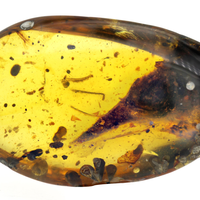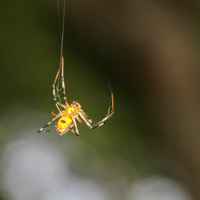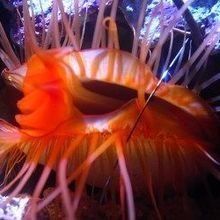Login
Subscribepredator

For Frogs, Bigger Brains Mean Worse Camouflage
Natalia Mesa, PhD | Aug 23, 2022 | 3 min read
Frogs invest in cognitive capacity to avoid predators—up until there are too many hungry snakes around for the evolutionary strategy to pay off.

How Rising Temperatures Affect Ocean Predation
Andy Carstens | Jun 9, 2022 | 3 min read
A study yields insights into how predator-prey dynamics may shift with climate change, but many questions remain.

Voles Trim Tall Grass to Prevent Attacks
Natalia Mesa, PhD | Mar 14, 2022 | 2 min read
Mongolian rodents join the ranks of earthworms and beavers as known ecosystem engineers.

Pandemic Lockdown Eases Mountain Lions’ Fear of Urban Areas
Jef Akst | Jul 2, 2021 | 4 min read
Six GPS-tracked wild cats wandered closer to Santa Cruz, California, and surrounding towns as human activity died down under shelter-in-place orders last March.

Few Car Crashes with Deer in Wisconsin, Perhaps Thanks to Wolves
Jef Akst | May 25, 2021 | 2 min read
In areas where gray wolf populations have grown, motorists have fewer collisions with deer, likely due to the predators keeping deer away from roadways.

Slideshow: How Ecologists Study the World’s Apex Predators
Katarina Zimmer | Nov 1, 2020 | 4 min read
A global decline of large carnivores has motivated scientists to understand the animals’ ecological roles, and consider whether reintroducing them can help restore ecosystems.

Can Rewilding Large Predators Regenerate Ecosystems?
Katarina Zimmer | Nov 1, 2020 | 10+ min read
As some conservationists and researchers begin to return large carnivores to areas where they once roamed, scientists intensify efforts to study the ecological roles of predators.

Infographic: How Large Carnivores Sculpt Ecosystems
Katarina Zimmer | Nov 1, 2020 | 4 min read
The release of gray wolves in Yellowstone decades ago still stands as one of the few examples of a predator reintroduction, and the lessons learned continue to be debated. New projects aim to do it again.

Risk of Extinction Is Greatest for Large Herbivores: Study
Ruth Williams | Aug 5, 2020 | 3 min read
Data on vertebrate species that have become, or are likely to become, extinct reveal plant eaters are most under threat.

Image of the Day: Tiny Dinosaur
Amy Schleunes | Mar 16, 2020 | 1 min read
A roughly 99-million-year-old piece of amber from northern Myanmar contains the skull of what appears to represent the smallest known dinosaur of the Mesozoic era.

Diving Beetle Adults and Larvae Dismember, Eat Tadpoles: Study
Catherine Offord | Jan 13, 2020 | 2 min read
The invertebrate predators prey on and lay their eggs near emerging tadpoles, potentially threatening the conservation of endangered frogs, researchers find.

Spider’s Orange Colors Both Lure Prey and Frighten Predators
Jake Buehler | Apr 22, 2019 | 3 min read
Spotted coin spider colors are a Swiss army knife of deception, bringing food closer, and keeping assailants at bay.

Image of the Day: A Good Egg
Sukanya Charuchandra | Jul 18, 2018 | 1 min read
Osprey numbers are recovering after a drop in contaminants in the Delaware Estuary.

The Caterpillar that Cries Wolf
Mary Bates | Sep 22, 2017 | 3 min read
In a case of acoustic deception, caterpillars mimic bird alarm calls to defend themselves.

Image of the Day: Messy Eater
The Scientist Staff | Jul 6, 2017 | 1 min read
The Jurassic predator Razanandrongobe sakalavae used its colossal, ragged teeth to rip through the muscles and bones of its prey.

Butterflies Weaponize Milkweed Toxins
Geoffrey Giller | Nov 4, 2015 | 3 min read
Monarch and queen caterpillars store toxic compounds from their milkweed diet to ward off predators into adulthood, a new study suggests.

Pupil Alignment of Predators and Prey
Amanda B. Keener | Aug 11, 2015 | 1 min read
Ambush predators are more likely to have vertical slit pupils, while foraging animals tend to have horizontal ones, a study shows.

Saw-toothed Dinos
Amanda B. Keener | Jul 29, 2015 | 1 min read
Microscopic analysis of carnivorous dinosaur teeth reveals specialized serrated edges.

Panic of the Disco Clam
Jenny Rood | Jan 6, 2015 | 2 min read
The mollusk’s flashy tactics scare off predators.
